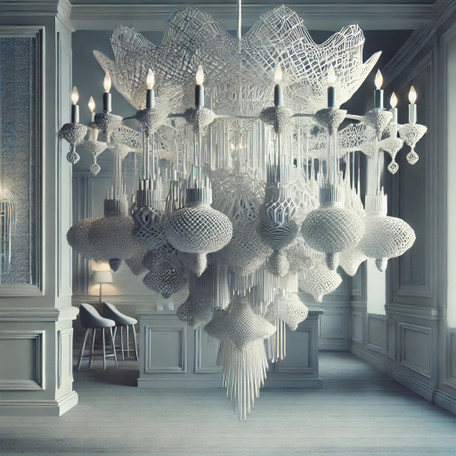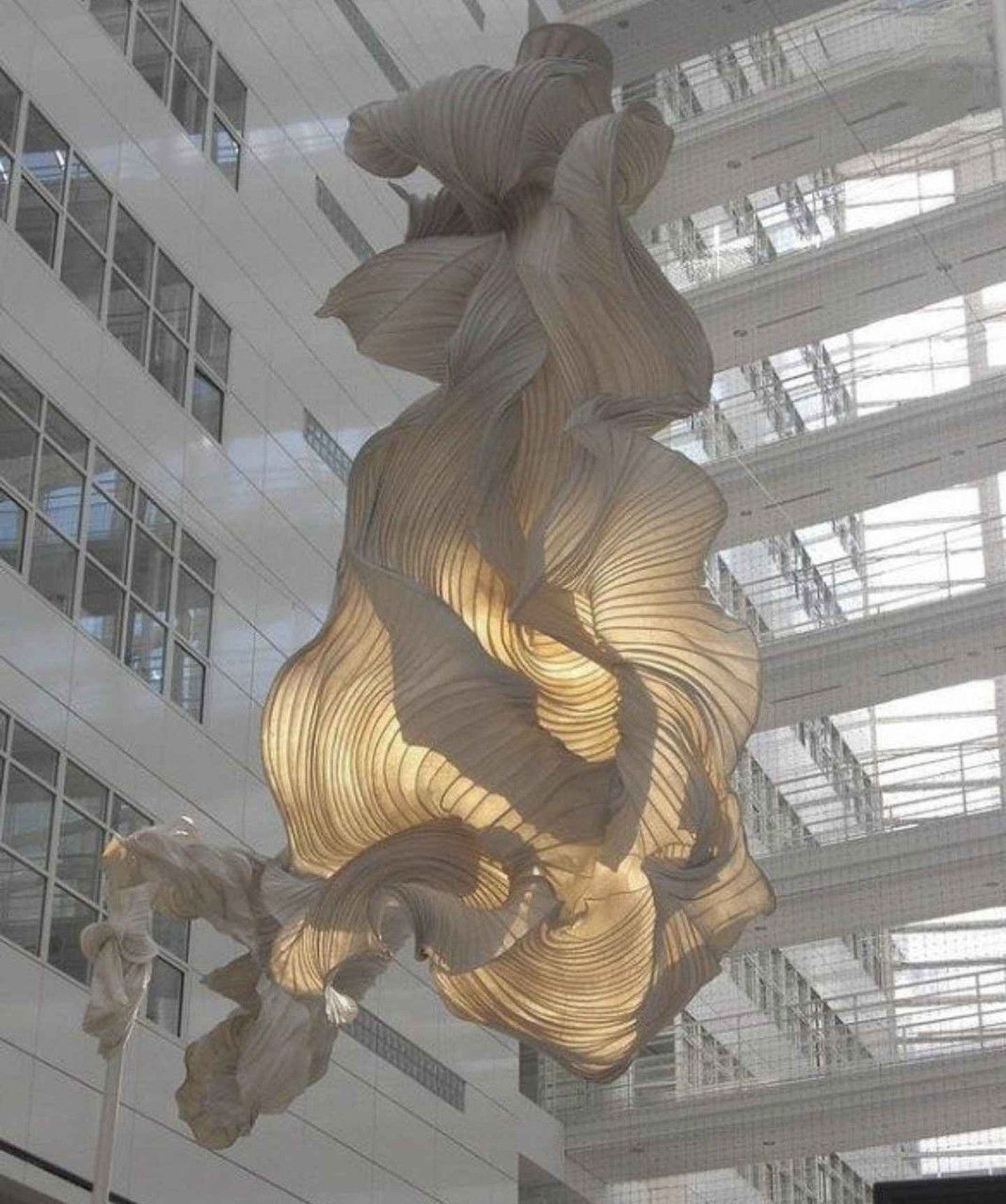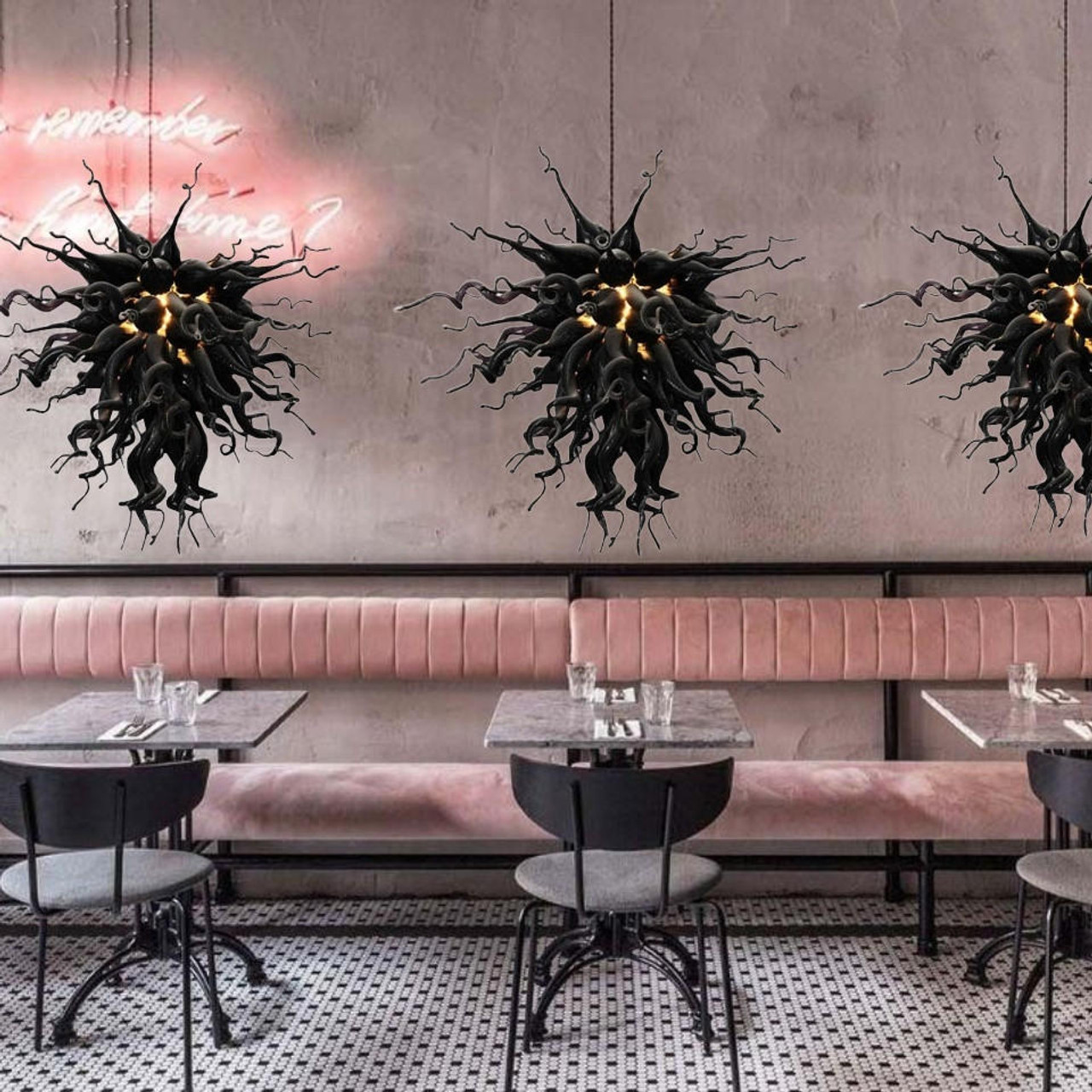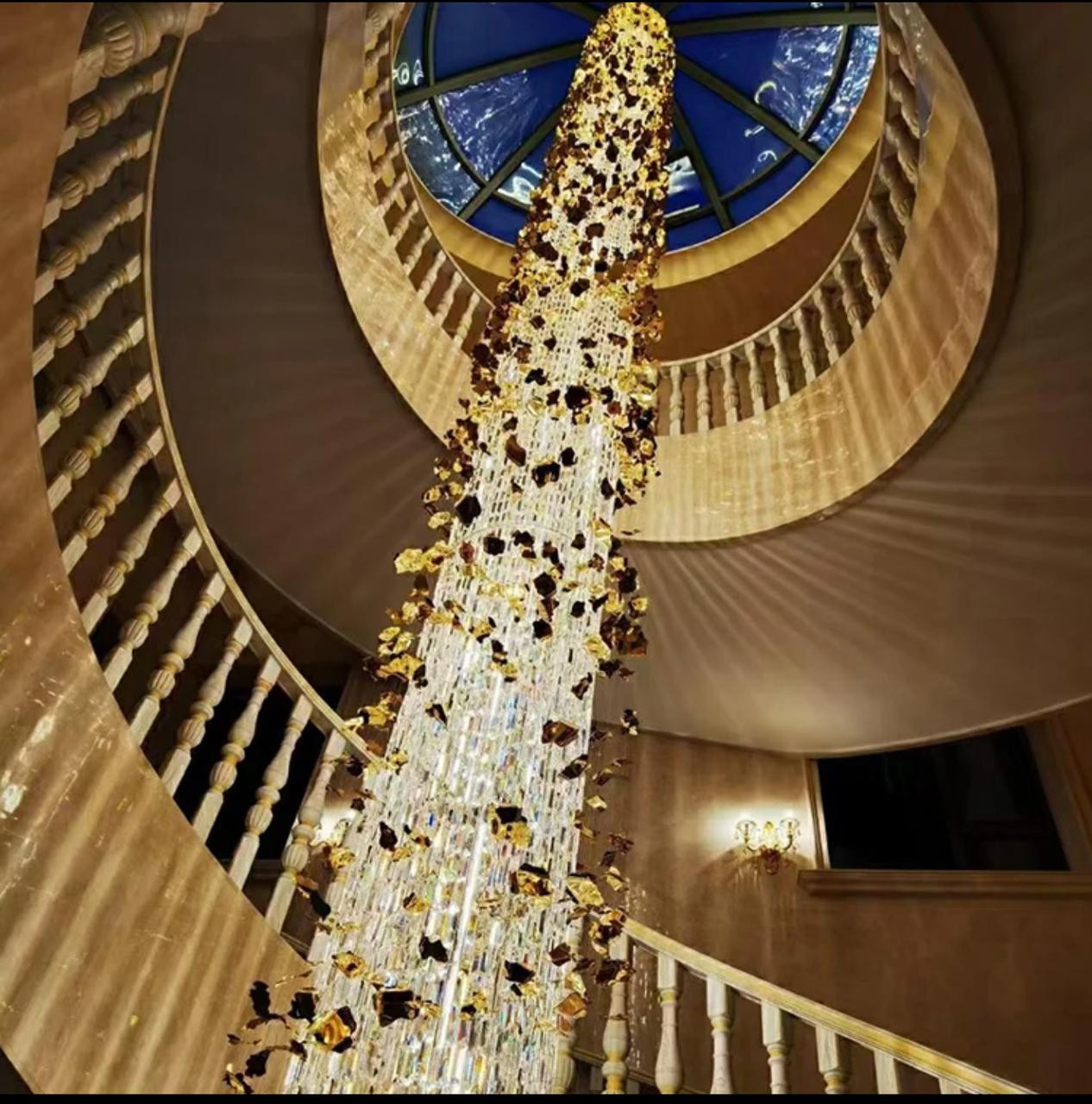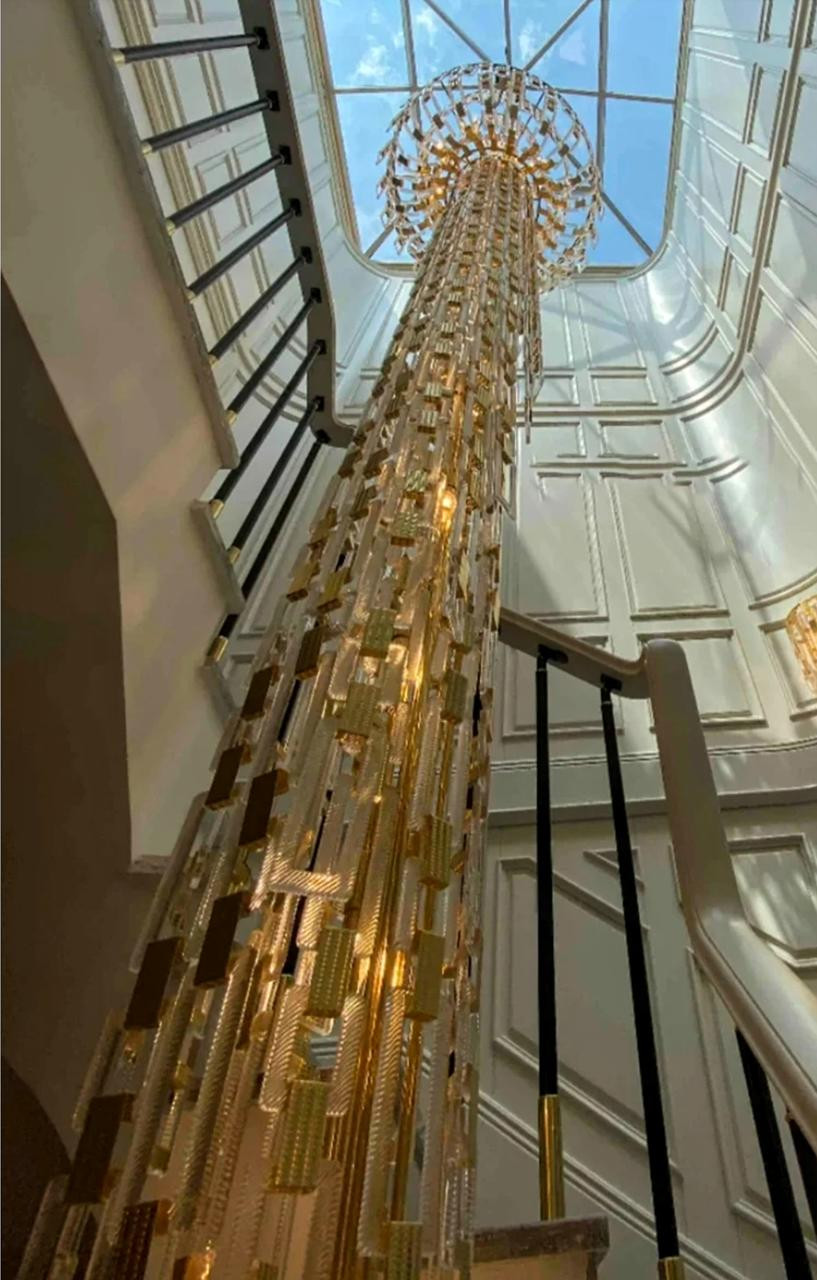Exploring the Potential of 3D Printed Chandeliers: A Dream or Reality?
20th Aug 2024
Exploring the Potential of 3D Printed Chandeliers: A Dream or Reality?
In recent years, 3D printing has emerged as one of the most exciting and innovative technologies across various industries. From healthcare to aerospace, the ability to create complex, customized objects on demand has revolutionized production processes and opened up new possibilities for design and functionality. The world of interior design has also felt the impact of 3D printing, particularly in the realm of lighting fixtures. Among the many applications of this technology, 3D printed chandeliers stand out as a symbol of the intersection between traditional luxury and modern innovation.
But is the dream of creating beautiful, functional chandeliers with 3D printing truly a reality, or is it still a work in progress? In this blog, we will explore the current state of 3D printing technology in relation to chandelier production, examining the capabilities, limitations, and future potential of this exciting development. We will also look at real-world examples of 3D printed chandeliers, assess consumer perceptions, and ultimately determine whether 3D printed chandeliers are a feasible option for modern interiors.
The Current Capabilities of 3D Printing in Producing Complex Lighting Fixtures
To understand the potential of 3D printed chandeliers, it's essential first to examine the current capabilities of 3D printing technology in producing complex lighting fixtures. 3D printing, also known as additive manufacturing, involves building objects layer by layer using materials such as plastic, metal, resin, or even ceramics. This method allows for intricate designs that would be difficult or impossible to achieve through traditional manufacturing techniques.
1. Design Flexibility
One of the most significant advantages of 3D printing is its unparalleled design flexibility. Designers can create intricate patterns, organic shapes, and geometrically complex structures that push the boundaries of traditional lighting design. With 3D printing, chandeliers can be customized to fit specific spaces, reflect personal aesthetics, or even incorporate unique features such as integrated wiring or diffusers that soften the light.
- Customizable Designs: 3D printing allows designers to create one-of-a-kind pieces tailored to the client’s specific needs and preferences. This level of customization is particularly valuable in the luxury lighting market, where bespoke designs are highly sought after.
- Complex Geometries: Unlike traditional manufacturing methods that may struggle with complex shapes, 3D printing excels in producing intricate and detailed structures. This capability opens up new possibilities for chandelier designs that are not only functional but also serve as stunning works of art.
2. Material Variety
The range of materials available for 3D printing has expanded significantly, allowing for the production of chandeliers that are both aesthetically pleasing and structurally sound. Depending on the desired look and feel, designers can choose from various materials, including:
- Plastics and Resins: These materials are commonly used in 3D printing due to their versatility, affordability, and ease of use. They can be finished to resemble glass, metal, or wood, making them suitable for a wide range of chandelier designs.
- Metals: Metal 3D printing is a more recent development that allows for the creation of durable, high-quality chandeliers. Metals such as aluminum, stainless steel, and titanium can be used to produce lightweight yet strong structures that are perfect for intricate designs.
- Ceramics: For a more traditional or rustic look, ceramic 3D printing offers a unique option. Ceramic chandeliers can be created with intricate details and finished with glazes that enhance their aesthetic appeal.
3. Precision and Accuracy
3D printing technology has advanced to the point where it can produce highly precise and accurate components. This precision is particularly important in chandelier production, where the alignment of parts and the balance of the structure are crucial for both functionality and aesthetics.
- Consistent Quality: 3D printing ensures that each component is produced to exact specifications, reducing the risk of errors or inconsistencies that can occur with traditional manufacturing methods.
- Complex Assemblies: The precision of 3D printing allows for the creation of complex assemblies that fit together seamlessly. This capability is essential for chandeliers, which often require multiple interconnected parts to achieve the desired look and function.
Real-World Examples: Are There 3D Printed Chandeliers in Use Today?
While the concept of 3D printed chandeliers may sound futuristic, there are already real-world examples of these innovative lighting fixtures being used in homes, commercial spaces, and even art installations. These examples showcase the potential of 3D printing to create chandeliers that are not only visually striking but also functional and practical.
1. Zaha Hadid's "Vortexx" Chandelier
One of the most notable examples of a 3D printed chandelier is the "Vortexx" chandelier, designed by the renowned architect Zaha Hadid. Created for the 2014 Milan Design Week, the Vortexx chandelier is a stunning example of how 3D printing can be used to push the boundaries of design.
- Innovative Design: The Vortexx chandelier features a swirling, organic form that resembles a vortex in motion. This complex shape would have been nearly impossible to achieve with traditional manufacturing methods, but 3D printing allowed Hadid to bring her vision to life.
- Material and Functionality: The chandelier was 3D printed using a high-performance polymer that is both lightweight and durable. Integrated LED lights were carefully positioned to highlight the fluid curves of the design, creating a dynamic interplay of light and shadow.
2. Exnovo's 3D Printed Chandeliers
Exnovo, an Italian lighting design company, has embraced 3D printing as a core part of its production process. The company offers a range of 3D printed chandeliers that combine cutting-edge technology with traditional craftsmanship.
- Bespoke Lighting Solutions: Exnovo's 3D printed chandeliers are fully customizable, allowing clients to choose the size, shape, and finish that best suits their space. The company also offers a variety of materials, including translucent resins and metals, to achieve different aesthetic effects.
- Sustainability: Exnovo is committed to sustainability, using 3D printing to reduce waste and energy consumption in the production process. This approach not only benefits the environment but also allows for more efficient and cost-effective manufacturing.
3. 3D Printed Chandeliers in Art Installations
Beyond residential and commercial applications, 3D printed chandeliers have also made their mark in the world of art and design installations. Artists and designers are using 3D printing to create chandeliers that challenge traditional notions of lighting and explore new possibilities in form and function.
- Interactive Installations: Some 3D printed chandeliers are designed to interact with their environment, responding to changes in light, sound, or movement. These installations blur the line between art and technology, offering viewers a unique and immersive experience.
- Experimental Designs: 3D printing allows artists to experiment with unconventional materials and forms, creating chandeliers that defy gravity, change shape, or emit light in unexpected ways. These experimental designs push the boundaries of what chandeliers can be, offering a glimpse into the future of lighting.
Limitations and Potential Improvements in 3D Printing Technology for Lighting
While 3D printing has opened up new possibilities for chandelier design, it is not without its limitations. As with any emerging technology, there are challenges that need to be addressed before 3D printed chandeliers can fully realize their potential. Understanding these limitations is crucial for determining the feasibility of 3D printing as a mainstream method for chandelier production.
1. Material Limitations
While the range of materials available for 3D printing has expanded, there are still limitations in terms of the durability, finish, and functionality of these materials when used in chandelier production.
- Strength and Durability: While metals and certain high-performance polymers offer strength and durability, many 3D printed materials are still not as robust as those used in traditional manufacturing. This limitation can impact the longevity and structural integrity of chandeliers, particularly those with intricate or delicate designs.
- Surface Finish: Achieving a high-quality surface finish with 3D printing can be challenging. Some materials may require additional post-processing, such as sanding, polishing, or coating, to achieve the desired look. This extra step can add time and cost to the production process.
- Material Compatibility: Combining different materials in a single 3D printed chandelier can be complex, as not all materials are compatible with each other. This limitation can restrict the design possibilities and affect the functionality of the final product.
2. Size Constraints
The size of 3D printed objects is limited by the dimensions of the printer's build platform. While larger 3D printers are available, they can be prohibitively expensive and may not offer the same level of precision as smaller printers.
- Segmented Printing: To overcome size constraints, designers can print chandeliers in segments that are later assembled. However, this approach can introduce challenges in aligning and securing the parts, potentially affecting the structural integrity and aesthetic of the chandelier.
- Scalability: Producing large-scale chandeliers with 3D printing can be time-consuming and costly. This limitation may restrict the use of 3D printing for larger, more elaborate lighting fixtures.
3. Cost and Accessibility
While 3D printing has the potential to reduce costs in certain aspects of production, it is still a relatively expensive technology, particularly for high-quality, large-scale prints.
- Initial Investment: The cost of purchasing and maintaining a 3D printer, as well as sourcing suitable materials, can be significant. This initial investment may be a barrier for small businesses or individual designers looking to enter the market for 3D printed chandeliers.
- Production Costs: Depending on the complexity of the design and the materials used, the cost of producing a 3D printed chandelier can be higher than that of a traditionally manufactured one. This factor may limit the accessibility of 3D printed chandeliers to a niche market.
4. Technical Challenges
Producing a functional and aesthetically pleasing chandelier using 3D printing technology requires a high level of technical expertise.
- Design Complexity: While 3D printing allows for intricate designs, it also requires careful planning and consideration of factors such as weight distribution, balance, and structural integrity. Designers must have a deep understanding of both the technology and the materials used to ensure that the final product is both beautiful and functional.
- Printing Errors: As with any manufacturing process, 3D printing is susceptible to errors such as warping, layer shifting, or incomplete prints. These issues can result in wasted materials and time, increasing the overall cost of production.
Consumer Perception: Are People Ready to Embrace 3D Printed Chandeliers in Their Homes?
Consumer perception plays a critical role in the adoption of any new technology, and 3D printed chandeliers are no exception. While the idea of a chandelier produced with cutting-edge technology may appeal to some, others may be hesitant to embrace 3D printed lighting fixtures in their homes.
1. Appeal to Early Adopters
Early adopters of technology and design trends are likely to be the first to embrace 3D printed chandeliers. These consumers are drawn to the novelty, customization, and innovation that 3D printing offers.
- Unique and Personalized Designs: Early adopters appreciate the ability to create one-of-a-kind chandeliers that reflect their personal style and complement their home decor. The customization options available with 3D printing are a significant draw for this group.
- Sustainability: Environmentally conscious consumers are also likely to be attracted to 3D printed chandeliers, particularly those made from sustainable or recycled materials. The potential for reducing waste and energy consumption in the production process is a compelling selling point.
2. Skepticism Among Traditionalists
On the other hand, traditionalists may be more skeptical of 3D printed chandeliers, particularly if they perceive them as lacking the craftsmanship and quality of traditional lighting fixtures.
- Concerns About Durability: Some consumers may question the durability and longevity of 3D printed chandeliers, particularly if they are made from materials that are less familiar or perceived as less robust.
- Aesthetic Preferences: Traditionalists may prefer the look and feel of chandeliers made from classic materials such as crystal, glass, or metal. They may view 3D printed chandeliers as too modern or unconventional for their tastes.
3. Market Education and Awareness
To overcome consumer skepticism, it is essential to educate the market about the benefits and possibilities of 3D printed chandeliers. This education can be achieved through:
- Demonstrating Quality: Showcasing high-quality examples of 3D printed chandeliers in real-world settings can help dispel concerns about durability and aesthetic appeal. Designers and manufacturers should highlight the craftsmanship and attention to detail that goes into each piece.
- Highlighting Customization: Emphasizing the customization options available with 3D printing can help consumers see the value in choosing a 3D printed chandelier over a mass-produced one. The ability to create a unique, personalized piece is a strong selling point.
- Transparency in Materials and Processes: Providing transparency about the materials used and the production process can help build trust with consumers. Explaining how 3D printing can contribute to sustainability and reduce waste may also resonate with environmentally conscious buyers.
Conclusion: Is the Idea of a 3D Printed Chandelier a Feasible and Realistic Option for Modern Interiors?
The idea of a 3D printed chandelier is not only feasible but also a reality that is already making its mark in the world of interior design. While there are still limitations and challenges to overcome, the potential of 3D printing in chandelier production is immense.
1. Pushing the Boundaries of Design
3D printing has opened up new possibilities for chandelier design, allowing for intricate, customizable, and innovative lighting fixtures that were previously unimaginable. As the technology continues to evolve, we can expect even more exciting developments in the design and production of 3D printed chandeliers.
2. Addressing Limitations
While there are still limitations in terms of materials, size, and cost, ongoing advancements in 3D printing technology are likely to address these challenges. As the technology becomes more accessible and affordable, we can expect to see 3D printed chandeliers become a more common option for both residential and commercial spaces.
3. Consumer Adoption
Consumer perception is gradually shifting, with more people becoming aware of the benefits and possibilities of 3D printed chandeliers. As market education and awareness increase, we can expect a growing number of consumers to embrace these innovative lighting fixtures in their homes.
4. The Future of 3D Printed Chandeliers
The future of 3D printed chandeliers is bright, with the potential to revolutionize the way we think about and design lighting fixtures. As the technology continues to advance, we can look forward to more stunning and functional chandeliers that combine the best of modern innovation with the timeless appeal of beautiful lighting.
In conclusion, while the dream of creating 3D printed chandeliers is still in its early stages, it is a reality that is already taking shape. With continued advancements in technology and design, 3D printed chandeliers are poised to become a significant player in the world of interior lighting, offering a unique blend of customization, sustainability, and innovation. Whether you’re an early adopter or a traditionalist, the potential of 3D printed chandeliers is something to watch closely as the future unfolds.

